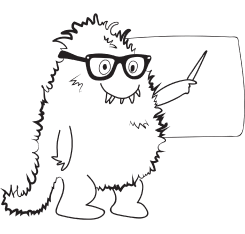Why is it increasingly crucial for organizations to manage both digital and spatial assets effectively? Have you considered the transformative potential of integrating DAM with GIS for your asset management strategy? What makes the fusion of these two technologies a game-changer in the digital age?
Understanding the Synergy Between DAM and GIS for Enhanced Asset Management
Integrating DAM with GIS capabilities is transforming how Environmental Agencies monitor ecosystems, Urban Planning Departments design cities, Cartography Firms create detailed maps, and Natural Resource Management organizations track resource use and conservation efforts.
These industries benefit from precise asset management, enhancing operational efficiency and enabling smarter strategic decisions. This fusion allows for the sophisticated management of digital and spatial data, from tracking wildlife populations and urban development to creating accurate geographical representations and sustainable resource use plans, showcasing the critical role of technology in managing our world’s assets.
Criteria for Selection
When choosing DAM software with GIS asset management features, consider these key criteria for an optimal selection:
- SQL Server and ESRI Product Integration: The software must seamlessly integrate with SQL Server databases and ESRI’s suite of geospatial products, ensuring compatibility and streamlined workflows.
- AI Tagging and Facial Recognition: Incorporating AI Tagging and Facial Recognition with GIS capabilities enhances asset management by enabling precise localization and identification of individuals or features within geospatial contexts. This synergy is particularly beneficial for fields requiring detailed monitoring and management of geographical areas, such as wildlife conservation, where identifying animal species and their movements across different terrains is crucial, or in urban planning, for assessing population density and demographic distributions. This integration facilitates a more nuanced analysis and management of spatial data, marrying visual recognition with geographical insights.
- Support for Various File Types: The ability to manage a diverse range of file formats, from images and videos to documents and spatial files, is essential.
- Robust Metadata Management: The system should offer comprehensive tools for generating, reading, and editing metadata across different file types, enhancing searchability and organization.
- Scalability: Choose software that can grow with your data needs, capable of handling increasing volumes of digital and geospatial assets without performance degradation.
- User Access and Collaboration Features: Ensure the software supports multiple users with varied access levels, facilitating collaboration while maintaining data security.
- Customization and API Support: Look for customizable options and API support to tailor the DAM system to your specific requirements, allowing for integration with other tools and systems.
- Developer Support and Training: Ideal DAM systems come with comprehensive support and training from the developer, ensuring that teams can be up and running within days, not months. This support includes detailed tutorials, user manuals, and responsive customer service to handle any queries or issues that arise during implementation. Fast-track training programs designed to quickly familiarize users with the system are essential for minimizing downtime and ensuring a smooth transition to the new DAM system.
Selecting software that meets these criteria will ensure your organization’s DAM system is powerful, flexible, and capable of managing your digital and geospatial assets effectively.
Top 3 DAM Systems Integrating GIS for Enhanced Asset Management
1. Daminion
Renowned for its robustness, Daminion offers centralized storage, simplifying the management, sharing, and tracking of digital assets, including geospatial data. It supports a wide range of media formats and features like advanced search and metadata management, making it ideal for small to medium-sized teams focusing on geographically-referenced digital assets.
Getting Started with Daminion
Experience Secure Multi-User Digital Asset Management!
Store, tag, search, and share media assets like never before ➡️

2. Cavok
Designed with a focus on media and digital asset management, Cavok also excels in handling geospatial data through its DAM system. Its unique selling point is its deep integration capability with various GIS platforms, allowing for seamless management of assets tied to specific locations or geographical information.
3. Canto
Canto provides a cloud-based DAM solution that offers robust features for managing digital assets, including images and videos tagged with geographical locations. It’s known for its user-friendly interface, efficiency in organizing and retrieving geospatial assets, and strong security measures, suitable for businesses needing to manage assets with spatial data efficiently.
Each system offers unique strengths for integrating digital asset management with GIS capabilities, catering to diverse organizational needs in managing digital and geospatial assets securely and efficiently.
Comparison of GIS DAM Systems: Criteria Analysis
Here’s the comparative overview with companies as columns and criteria as rows:
| Feature | Daminion | Cavok | Canto |
|---|---|---|---|
| SQL Server and ESRI Integration | Yes | Limited | No |
| AI Tagging and Facial Recognition | Advanced | Basic | Advanced |
| Support for Various File Types | Extensive | Wide range | Extensive |
| Robust Metadata Management | High | Moderate | High |
| Scalability | High | Medium | High |
| User Access and Collaboration | Rich | Moderate | Rich |
| Customization and API Support | Flexible | Moderate | Flexible |
| Developer Support and Training | Comprehensive | Standard | Comprehensive |
AI Tagging and Facial Recognition Comparison
| Criteria | Daminion | Cavok | Canto |
|---|---|---|---|
| Advanced AI Functionality | Daminion offers advanced AI functionalities for tagging and facial recognition, enhancing asset management by enabling precise localization and identification of individuals or features within geospatial contexts. This integration is particularly beneficial for fields requiring detailed monitoring and management of geographical areas, such as wildlife conservation and urban planning. | Cavok provides robust AI tagging and facial recognition capabilities, allowing for accurate identification and localization of objects within GIS environments, enhancing asset management and analysis. | Canto offers sophisticated AI tagging and facial recognition features, enabling precise identification and localization of objects within geospatial data, thereby enhancing asset management and facilitating in-depth analysis and visualization. |
| Precise Object Localization | Daminion’s AI capabilities enable precise object localization within geospatial contexts, ensuring accurate identification and tracking of objects such as wildlife species or urban infrastructure elements. | Cavok’s AI tagging and facial recognition features enable precise object localization, enhancing asset management by providing accurate location information within GIS environments. | Canto’s AI capabilities ensure precise object localization within geospatial data, facilitating accurate identification and tracking of objects for effective asset management and analysis. |
| Facial Recognition | Daminion supports facial recognition, allowing for the identification and categorization of individuals within digital assets, enhancing security and enabling personalized access control. | Cavok offers facial recognition capabilities, enabling the identification and categorization of individuals within GIS data for improved asset management and security purposes. | Canto provides advanced facial recognition features, allowing for the identification and categorization of individuals within geospatial data, enhancing security and enabling personalized access control. |
| Species Identification | Daminion’s AI capabilities extend to species identification within geospatial data, facilitating wildlife conservation efforts by enabling the identification and monitoring of different species across diverse habitats. | Cavok supports species identification within GIS environments, aiding wildlife conservation initiatives by enabling accurate species monitoring and analysis. | Canto offers species identification features, assisting in wildlife conservation efforts by enabling precise species monitoring and analysis within geospatial data. |
| Urban Planning Applications | Daminion’s AI tagging and facial recognition functionalities are valuable for urban planning applications, allowing for population density assessment, demographic analysis, and infrastructure monitoring within urban environments. | Cavok’s AI capabilities are beneficial for urban planning applications, facilitating population density analysis, demographic studies, and infrastructure monitoring within GIS data. | Canto provides AI features suitable for urban planning, enabling population density assessment, demographic analysis, and infrastructure monitoring within geospatial datasets. |
Explanation:
- Advanced AI Functionality: The advanced AI functionalities for tagging and facial recognition within geospatial contexts enable precise object identification and localization, supporting various applications such as wildlife conservation and urban planning. These functionalities enhance asset management by accurately identifying and tracking objects within GIS environments.
- Precise Object Localization: The AI capabilities ensure precise localization of objects within geospatial data, allowing for accurate identification and monitoring of objects like wildlife species or urban infrastructure components. This feature provides detailed insights into their spatial distribution and characteristics, enhancing asset management.
- Facial Recognition: Facial recognition capabilities allow for the identification and categorization of individuals within digital assets. This feature enhances security measures and enables personalized access control, contributing to improved data governance and asset protection within GIS environments.
- Species Identification: The AI functionalities extend to species identification within geospatial data, facilitating the identification and monitoring of various species across different habitats. By supporting environmental management initiatives, this capability aids in biodiversity conservation strategies.
- Urban Planning Applications: The AI tagging and facial recognition functionalities find application in urban planning contexts, supporting population density assessment, demographic analysis, and infrastructure monitoring within urban environments. These capabilities provide insights into population distribution, movement patterns, and infrastructure utilization for data-driven decision-making in urban development projects.
Recommendation:
- Consider leveraging AI tagging and facial recognition capabilities to enhance asset management and analysis within GIS environments.
- Evaluate the specific needs of your organization and choose a solution that offers robust AI functionalities tailored to your use case.
- Prioritize solutions that provide precise object localization, facial recognition, and species identification capabilities to meet your requirements effectively.
Important:
- Assess the scalability and performance of AI tagging and facial recognition functionalities to ensure compatibility with your organization’s data volume and processing requirements.
- Consider the ethical implications and privacy concerns associated with facial recognition technologies, and implement appropriate data governance measures to protect sensitive information.
- Evaluate the integration capabilities of AI functionalities with your existing GIS infrastructure and workflows to ensure seamless adoption and interoperability.
- Invest in user training and support to maximize the benefits of AI tagging and facial recognition functionalities, empowering users to leverage these tools effectively for enhanced asset management and analysis.
SQL Server and ESRI Integration
| Feature | Daminion | Cavok | Canto |
|---|---|---|---|
| SQL Server and ESRI Integration | Daminion seamlessly integrates with SQL Server databases and ESRI’s suite of geospatial products, ensuring compatibility and streamlined workflows. This integration enables users to leverage geospatial data within the familiar environment of SQL Server and ESRI tools, enhancing data management and analysis capabilities. | Cavok offers robust integration with SQL Server and ESRI’s geospatial products, providing users with seamless access to geospatial data and analysis tools within the Cavok platform. This integration enhances collaboration and streamlines workflows for geospatial projects. | Canto provides comprehensive integration with SQL Server databases and ESRI’s suite of geospatial products, allowing users to seamlessly access and manage geospatial data within the Canto platform. This integration enhances data interoperability and facilitates efficient geospatial analysis and visualization. |
Strengths and Weaknesses of Each GIS-oriented DAM System
When evaluating GIS-oriented DAM systems like Daminion, Cavok, and Canto, it’s essential to consider their respective strengths and weaknesses to make an informed decision.
Daminion:
Strengths:
- Advanced AI functionalities for tagging and facial recognition, enabling precise localization and identification of objects within geospatial contexts.
- Robust metadata management capabilities, facilitating efficient organization and retrieval of digital assets.
- Seamless integration with SQL Server databases and ESRI’s suite of geospatial products, ensuring compatibility and streamlined workflows.
- Scalability and flexibility to accommodate the evolving needs of organizations, from small teams to large enterprises.
- User-friendly interface and customizable options, enhancing usability and adaptability to specific use cases.
Weaknesses:
- Can be expensive for some organizations
Cavok:
Strengths:
- Robust AI tagging and facial recognition capabilities, enabling accurate identification and localization of objects within GIS environments.
- Integration with various GIS tools and platforms, providing flexibility and interoperability for users.
- Scalability to support growing data volumes and user needs over time.
- Customization options to tailor the system to specific organizational requirements.
Weaknesses:
- Limited availability of pre-built integrations with popular third-party applications, potentially requiring additional development effort for seamless integration.
- User interface and usability may not be as intuitive or user-friendly as some competing solutions, leading to a steeper learning curve for new users.
Canto:
Strengths:
- Sophisticated AI tagging and facial recognition features, enabling precise identification and localization of objects within geospatial data.
- Integration capabilities with GIS tools and platforms, facilitating seamless data exchange and workflow integration.
- Customization options to adapt the system to specific organizational needs and workflows.
Weaknesses:
- Limited pre-built integrations with third-party applications, potentially requiring custom development for seamless integration.
- Higher cost compared to some competing solutions, especially for organizations with budget constraints.
- Learning curve for users unfamiliar with the platform, requiring comprehensive training and onboarding support.
In summary, while each GIS-oriented DAM system offers unique strengths, Daminion stands out for its advanced AI functionalities, seamless integration capabilities, scalability, and user-friendly interface. However, organizations should carefully evaluate their specific requirements and consider factors such as integration needs, usability, and budget constraints when selecting the most suitable solution for their GIS asset management needs.
Which one is better?
Selecting the right GIS-oriented DAM system for your organization requires careful consideration of your specific requirements and objectives. Here’s a brief overview of each system’s strengths and areas of expertise:
- Daminion: With advanced AI functionalities for tagging and facial recognition, seamless integration with SQL Server and ESRI products, and scalability for future growth, Daminion is an excellent choice. Its user-friendly interface and robust metadata management capabilities make it particularly suitable for efficient digital asset management within your IT infrastructure.
- Cavok: Offers robust AI tagging and facial recognition capabilities, interoperability with various GIS tools, and scalability for growing data volumes.
- Canto: Provides sophisticated AI tagging and facial recognition features, seamless integration with GIS tools, and customization options for unique workflows.
- Ultimately, conducting a comparative analysis and testing each GIS-oriented DAM system within your organization’s environment is essential to determine the best fit. Consider factors such as integration capabilities, usability, scalability, and budget constraints before making a decision. Additionally, leveraging trial periods or demonstrations can provide valuable insights into each system’s performance and suitability for your specific needs.
Ultimately, conducting a comparative analysis and testing each GIS-oriented DAM system within your organization’s environment is essential to determine the best fit. Consider factors such as integration capabilities, usability, scalability, and budget constraints before making a decision. Additionally, leveraging trial periods or demonstrations can provide valuable insights into each system’s performance and suitability for your specific needs.

Get a free Daminion demo today with our expert!
Discover how Daminion can streamline your digital asset management and save you precious time every day. Book your 30-minute demo now!
Summary
Key features of DAM systems for the industry include advanced AI tagging and facial recognition capabilities, seamless integration with SQL Server databases and ESRI’s geospatial products, support for diverse file formats, robust metadata management tools, customizable API support, scalability, user access and collaboration features, and developer support with training.
Among the evaluated options, Daminion emerges as the superior choice due to its unmatched flexibility, user-friendly features, and cost-effectiveness. With seamless integration into existing workflows, adaptability to various business sizes, and comprehensive support and training, Daminion offers the most efficient solution for managing digital assets in the industry.
Getting Started with Daminion
Experience Secure Multi-User Digital Asset Management!
Store, tag, search, and share media assets like never before ➡️







